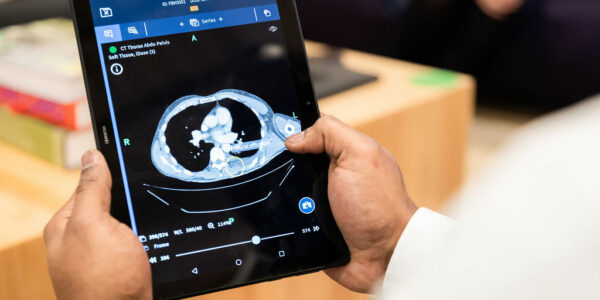Modernising India’s healthcare system
24/06/21
The COVID crisis only strengthens the urgent need for modernising India’s healthcare system. By Consultant Radiologist Dr Venkat Ramana Sudigali.
As a doctor and fellow Indian, I have sometimes felt helpless seeing my country in such a crisis from the impact of COVID on our people and resources. We have been doing our best to deal with the crisis. However, how do we tackle issues that have built over decades, centuries even, when faced with such a catastrophic situation? Right now, I know we are too deep in it to be able to do anything other than just get by. But, this highlights more than ever our need to urgently drive forward, modernise and update our healthcare system.
National Digital Health Mission
Digitalising healthcare has been ongoing in many parts of the world, including India. Many foresee India’s National Digital Health Mission as a key driver for this change in the next few years.
The mission’s objectives include a unique health ID for every Indian citizen and digitized health records. Additionally, the mission aims for a registry of doctors and health facilities. Therefore, providing everyone access to India’s healthcare system. Some of the key elements include telemedicine, health records, and health registry. As well as, digi-doctor and e-pharmacy services.
India’s healthcare system
In rural India, only 13% of the people have access to a primary health centre, 33% to a sub-centre and 9.6% to a hospital (Economic Times). Clearly, to create an accessible system that works, we must look holistically at quality care at an affordable price. Furthermore, how insurance will support that.
I believe that this is the right path for our country. With the help of innovative medical technologies, the globalisation of the internet and access to treatment through digital means, we can make the mission work for the benefit of all.
In my experience from working internationally, we need to embrace new technologies that have seen success elsewhere. There are solutions that provide a different approach, as well as those that take away the heavy load from overworked medical staff. Or even streamline a cumbersome element of the system. Who doesn’t want that? A recent example of a time-saving, efficient solution that I’ve seen in action is Bleepa.
Bleepa
Bleepa is a simple idea that combines medical image sharing with clinical communications through a mobile app. It’s similar in its ease of use to WhatsApp but it’s totally secure. The app has received regulatory certification, giving clinicians the confidence and trust that they need. Although it’s simple, it has taken decades of imaging expertise, combined with digital know-how. Moreover, and importantly, vision, to make it happen.
For India, Bleepa can support any hospitals and healthcare institutions. And it can do this without location being a constraint. Currently, access to centres of excellence in the four major cities is not possible for all, with both capacity and funding limiting access to top-tier treatment. New technologies, such as Bleepa, can provide the vital digital link between these centres of excellence and regional, hub and spoke models or even mobile care units. This enables millions more patients to receive the high standards of care targeted in the National Digital Health Mission. And this is just one technology – with so many on offer to review, and with the nation’s willingness to enable change, just think of the new world-class healthcare system we can create in India.
Looking to the future
At times these plans can seem so huge it feels almost impossible to imagine it will happen. However, with every little improvement, every new and modern approach using the latest technologies, we can change our current system and help all patients. I want to be at the forefront of this revolution, to help make that change, to make a difference for my fellow people. The devastation caused by COVID only highlights to me how much that change is needed.



